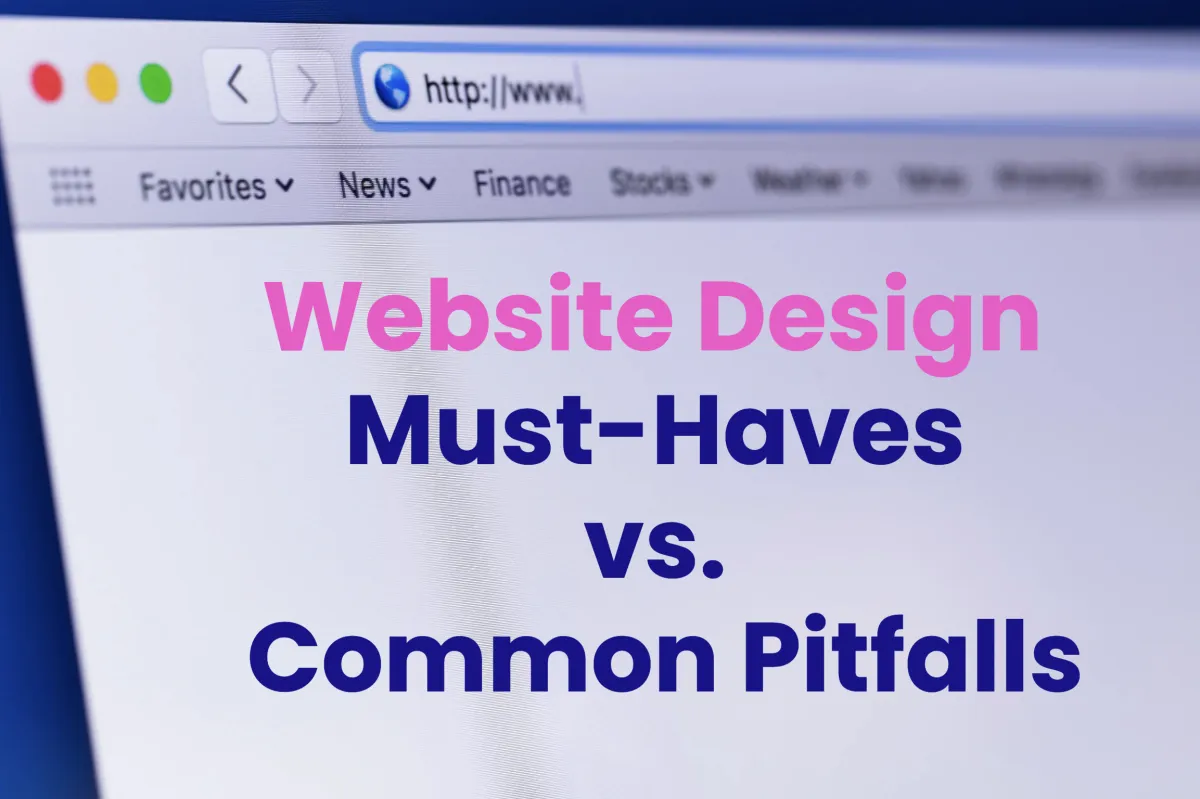
Website Design Must-Haves vs. Common Pitfalls
A recent conversation with a client whose team members differed on their opinion of website style made me start thinking about best practices. Like in home design - there are basic design enhancers and distractors for websites as well. Visitors form an opinion about your site in as little as 3 seconds, and if you lose them, they may never come back. Below are the “must-haves” and the “pitfalls” when designing a website.
The Top 5 Must-Haves
1. The 3-Second Rule
Within three seconds, a visitor should know who you are, what you offer, and what action to take. This means a clear headline, benefit-driven subheadline, and a strong call-to-action button all visible before they need to scroll.
2. Visual Hierarchy & the F-Pattern
Studies show people read websites in an “F” pattern: scanning left to right across the top, then down the left side, with occasional sweeps across. Design your content accordingly with headlines, key images, and CTAs aligning with this natural reading flow.
3. The 80/20 Rule (Pareto Principle)
80% of results come from 20% of actions. On a website, that translates to: prioritize the 20% of content that drives conversions (your offer, testimonials, and CTA). Keep supporting details accessible but secondary.
4. Mobile-First Responsiveness
Over half of all web traffic is mobile. A responsive design that looks great and functions seamlessly on phones is no longer optional, it's a must-have.
5. Speed & Simplicity
Every extra second of load time increases bounce rates. Optimize images, streamline code, and avoid unnecessary plugins. A fast, clean site is a trustworthy site.
The Top 5 Pitfalls
1. Clutter Over Clarity
Too many fonts, colors, or competing elements overwhelm visitors. Simplicity is the key!
2. Weak CTAs (or Too Many)
Buttons like “Submit” don’t inspire action. Make CTAs specific (“Get My Free Quote”) and don’t scatter them so much that your user feels paralyzed by choice.
3. Ignoring Accessibility
Contrast, font size, and alt text aren’t just compliance issues, they make your site usable for everyone. A site that excludes visitors leaves money on the table.
4. Stock Photo Overload
Use authentic photography whenever possible, or customize stock photos so they feel aligned with your brand.
5. Neglecting Analytics
A pretty site without data is like a store with no cash register. Connect analytics so you can track what’s working and refine over time.
So, how does your site measure up? Take this list and do a quick audit and adjust! Your site visitors will thank you! Need help? Shoot us an email: [email protected]
